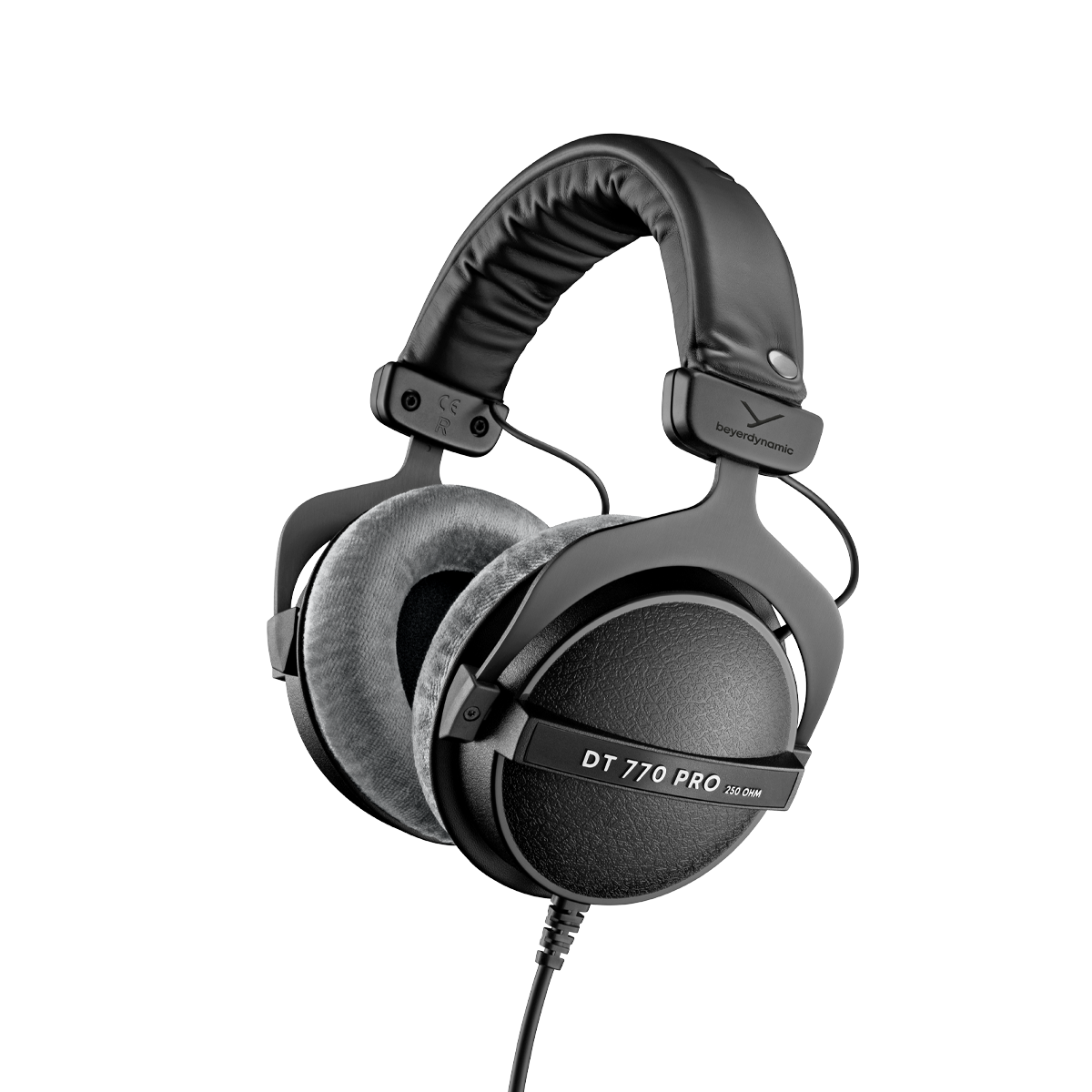
Mix With Confidence — Even on Headphones
Discover the proven system trusted by thousands of producers and engineers to create release-ready mixes from anywhere — without expensive monitors or acoustic treatment.
Dive Into The Blueprint ↓Inside The Headphone Mixing Blueprint
A clear, repeatable workflow for achieving mix translation and confidence — even without studio monitors.
🎧 Can You Actually Mix on Headphones?
Absolutely — when you pair proper calibration with disciplined referencing. Headphones remove room issues but exaggerate left/right separation, so your goal is to learn how that translates to real-world playback. Once you do, it’s a superpower.

Open-back: Natural stereo image & spaciousness — ideal for mixing.

Closed-back: Isolation & focus — best for tracking and secondary mix checks.
🛠️ Headphone Calibration (Oratory1990 + FabFilter)
Headphone calibration evens out frequency imbalances so your mixes translate accurately — no matter what headphones you use. This process flattens peaks and dips unique to each model, giving you a neutral, trustworthy monitoring curve.
- Find your model: Oratory1990 Preset List
Works for hundreds of popular headphones — Sennheiser, Beyerdynamic, Audio-Technica, Sony, and more. - Convert for FabFilter Pro-Q: EQ Conversion Sheet
Most EQ plugins can load Oratory values directly, but if you’re using FabFilter Pro-Q, use this sheet to match the exact frequency, Q, and gain settings. - Insert in your chain: Place your calibration EQ after your mix bus limiter but before your meters — or apply it only on your headphone output for cleaner routing (shown below).
- Level-match: Toggle bypass and match levels before evaluating. Louder isn’t better — just different.

Pro Tools routing example — calibration EQ applied only to the headphone output bus.
📊 Frequency Focused Referencing™ (FFR)
Frequency Focused Referencing™ (FFR) takes traditional A/B referencing to the next level. Instead of comparing entire mixes, you isolate frequency zones with precision — revealing what’s really happening in your mix compared to a mastered release.
1. Choose Smart References
Pick 1–3 songs that match your mix’s energy, vocal range, and instrumentation. If your track features a male vocal in G, choose a reference with a similar range — not a deep, sub-heavy track in D♭. The closer the match, the more accurate your referencing will be.
2. Loudness Alignment
Before comparing, make sure your mix is level-matched with the mastered reference. Louder will always sound “better,” so we bring your mix up to a fair comparison point — without crushing its dynamics.
- Console saturation: Subtle harmonic glue (Slate VMR, Waves NLS, etc.).
- Parallel compression: Blend 10–30% of a heavily compressed return for punch and cohesion.
- Soft clipping: 1–2 dB of gentle clip before your limiter — enough to add density without distortion.
- Limiter: Keep it transparent — aim to tickle, not slam. We’re going for reference *feel*, not volume wars.
This gets your mix in the “mastering ballpark” so the tonal balance comparison is apples-to-apples.
3. Zoom In by Frequency
Load FabFilter Pro-Q 4 (or any EQ with steep slopes) after your limiter. Use high-pass and low-pass filters with a slope of 48 dB per octave or higher to isolate specific zones, then A/B between your mix and the reference.
| Zone | Focus | Listen For |
|---|---|---|
| 30 – 70 Hz | Kick / Sub-bass | Weight, tightness, sub clarity |
| 100 – 250 Hz | Bass body | Warmth vs. mud |
| 400 – 800 Hz | Low mids | Presence without boxiness |
| 2 – 5 kHz | Presence range | Vocal bite, snare snap |
| 8 – 12 kHz | Air / Brilliance | Open shimmer vs. harshness |
Work one range at a time. Once your low end, mids, and top end feel balanced like the reference, remove the filters and re-listen full-range. You’ll instantly hear how your mix translates across systems.
4. Translate & Trust
After balancing each range, test your mix on multiple systems — headphones, car, laptop, monitors. The goal is translation, not imitation. When it feels balanced and emotionally consistent everywhere, you’ve done your job.
The goal isn’t to copy your reference — it’s to understand *why* it translates. Once you can identify that balance, you’ll never second-guess your mix again.
Watch the System in Action
A quick walkthrough of calibration + Frequency Focused Referencing™ in a real mix.
Blueprint Labs — Lock It In
Three quick missions to make translation second nature.
Mission 1 — Build Your Reference Arsenal
Pick 5–10 great masters across your genres. Loudness-match them and keep them ready in every session.
- 2 modern pop/rock
- 2 intimate vocal
- 1 bass-forward
- 1 big space
Mission 2 — Diagnose with FFR™
Loop 8–12s, level-match, compare by frequency zone, make a single decisive move, re-check.
- Low → kick/bass glue
- Low-mid → mud/box
- High-mid → presence/edge
- Air → sheen vs sharp
Mission 3 — Ship & Review
Bounce a pass, listen on 2–3 real-world systems, note deltas, and iterate once.
Get Feedback Inside The Control RoomTake It Offline
Prefer a printable version or want the guide beside your DAW? Grab the PDF and my FabFilter midrange presets.

